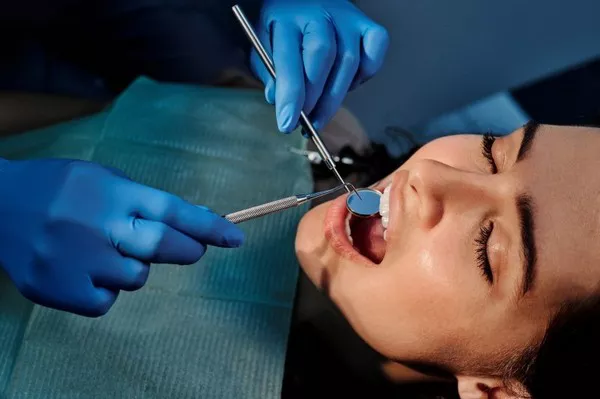Dental implants have revolutionized the field of dentistry, offering a long-term solution to missing teeth and restoring smiles with remarkable precision. These small titanium posts, surgically implanted into the jawbone, serve as sturdy foundations for artificial teeth, providing patients with a natural-looking and functional replacement for missing teeth. While the concept of dental implants may seem straightforward, there exists a diverse range of implant types, each tailored to specific patient needs and anatomical considerations. Understanding the various types of dental implants is crucial for both patients and dental professionals alike, as it enables informed decision-making and ensures optimal treatment outcomes.
1. Endosteal Implants
Endosteal implants are the most common type of dental implants and are typically used as a primary option for patients with sufficient jawbone density. These implants consist of small screws, cylinders, or blades that are surgically inserted directly into the jawbone. Once the implant site has healed and osseointegration—the process by which the implant fuses with the surrounding bone—has occurred, prosthetic teeth or dental bridges can be securely attached to the implants. Endosteal implants offer exceptional stability and durability, making them a preferred choice for many patients seeking a long-term tooth replacement solution.
2. Subperiosteal Implants
Subperiosteal implants are an alternative option for patients with insufficient jawbone density or those who are unable to undergo bone augmentation procedures. Unlike endosteal implants, which are placed within the jawbone, subperiosteal implants are positioned on top of the bone, just beneath the gum tissue. This type of implant consists of a metal framework that rests on the jawbone and is secured in place with small metal posts. Once the gums have healed and the implant has integrated with the bone, artificial teeth can be attached to the framework. Subperiosteal implants offer a viable solution for individuals who may not be candidates for traditional implant surgery.
3. Zygomatic Implants
Zygomatic implants are designed for patients who have experienced significant bone loss in the upper jaw, particularly in the area of the maxillary sinuses. Traditional implant placement in such cases may be challenging due to insufficient bone volume. Zygomatic implants bypass this issue by anchoring into the dense zygomatic bone, which forms the cheekbone. By utilizing longer implants that extend into the zygomatic bone, dental professionals can provide stable support for prosthetic teeth without the need for bone grafting procedures. Zygomatic implants offer a viable solution for patients with severe bone resorption in the upper jaw, restoring both function and aesthetics to their smiles.
4. All-on-4 Implants
All-on-4 implants, also known as full arch implants or full mouth implants, offer a comprehensive solution for patients who are missing an entire arch of teeth or are in need of full mouth rehabilitation. This innovative approach involves the strategic placement of just four implants per arch—two anterior implants placed vertically and two posterior implants tilted at an angle. By maximizing the available bone and utilizing precise angulation, dental professionals can achieve optimal support for a full set of prosthetic teeth with minimal surgical intervention. All-on-4 implants provide patients with a cost-effective and efficient way to restore their smiles and regain confidence in their appearance.
5. Mini Implants
Mini implants, as the name suggests, are smaller in diameter compared to traditional dental implants. These implants are often used in situations where there is limited space or insufficient bone volume for standard implants. Mini implants are typically inserted directly into the jawbone through minimally invasive techniques, eliminating the need for extensive surgical procedures. While they may not offer the same level of stability as standard implants, mini implants can still provide adequate support for dental prosthetics such as dentures, bridges, or crowns. Additionally, their smaller size makes them a suitable option for patients who prefer less invasive treatment options.
6. Immediate Load Implants
Immediate load implants, also known as same-day implants or teeth-in-a-day, enable patients to receive functional teeth shortly after implant placement. Unlike traditional implants, which require a healing period of several months before prosthetic teeth can be attached, immediate load implants allow for immediate restoration of chewing function and aesthetics. This is made possible by utilizing specially designed implants and prosthetic components that promote rapid osseointegration and stability. While not suitable for all patients or clinical scenarios, immediate load implants offer a convenient and time-saving option for individuals seeking expedited tooth replacement treatment.
Conclusion
In conclusion, the world of dental implants offers a diverse array of options tailored to meet the unique needs of each patient. From traditional endosteal implants to innovative solutions like zygomatic and All-on-4 implants, dental professionals have a wealth of tools at their disposal to restore smiles and improve quality of life. By understanding the various types of dental implants and their respective advantages, patients can make informed decisions regarding their oral health and choose the treatment option that best suits their needs. With ongoing advancements in implant technology and surgical techniques, the future of dental implantology holds even greater promise for delivering exceptional outcomes and transforming lives.
What Insurance Covers Dental Implants
What Is The Cost Of Dental Implants
What Is The Average Cost Of Dental Implants






























